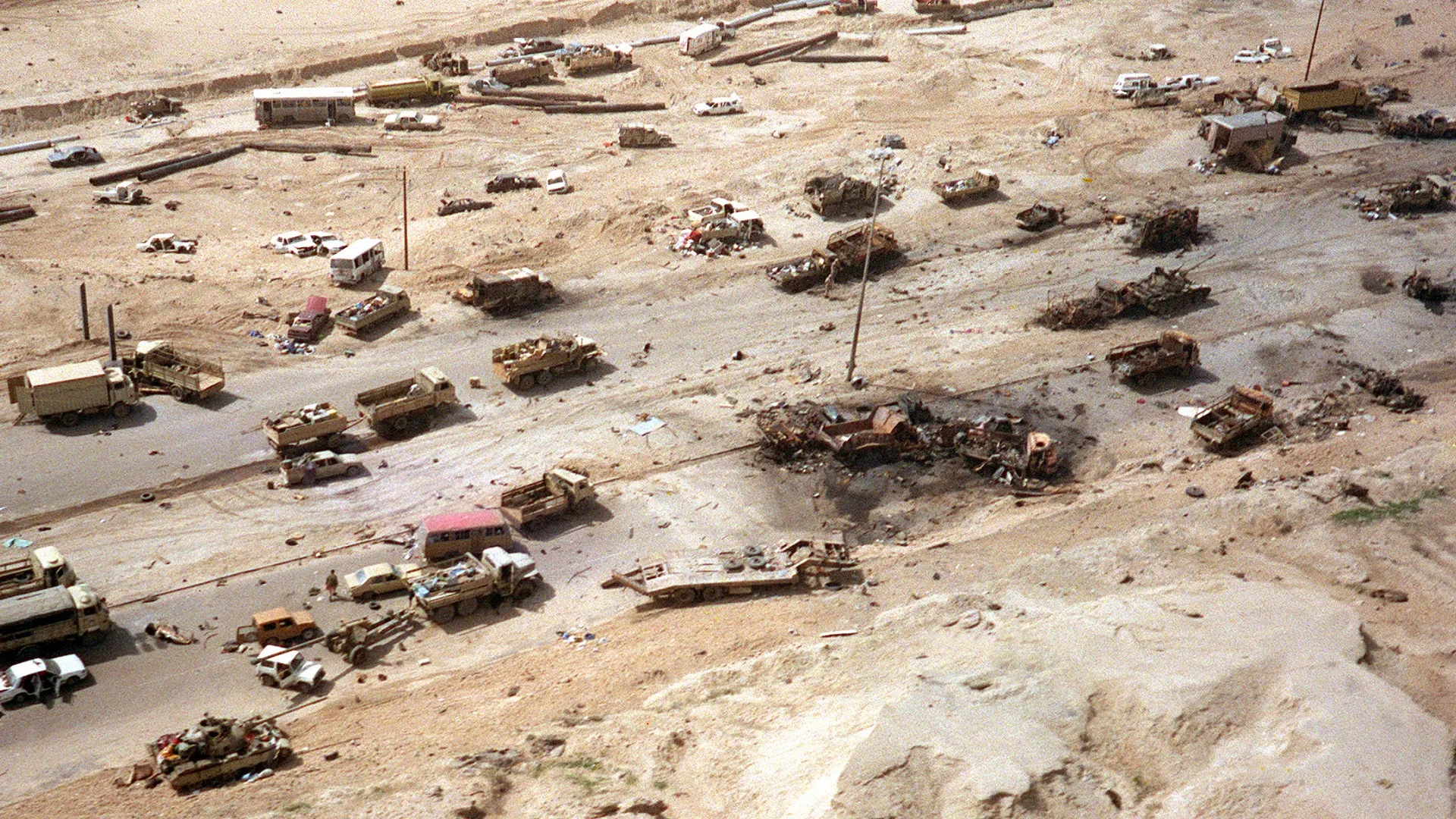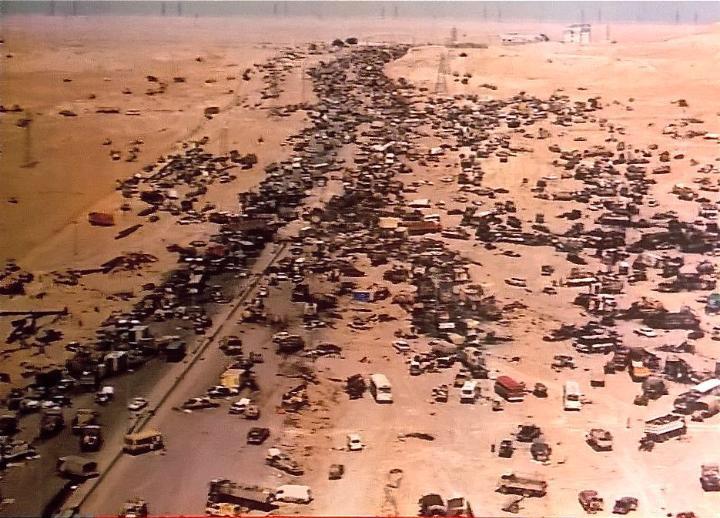If the name isn’t enough to shock you, there is no doubt the catalogue of images that have come to symbolise this period of the Gulf War will send shivers down your spine.
What is the Highway of Death?
Officially it is called highway 80, but its gruesome past redefined this road changing its place in history and giving it the ill-famed nickname “The Highway of Death”. This expansive six lane road connects Kuwait City to the border town of Safwan in Iraq, then inwards further to Basra. So, when Saddam Hussein wanted to invade Kuwait in August 1990, the Highway of Death went from an ordinary asphalt road to an instrument in war.
Like many decisions made by the dictator, the invasion was poorly received. However, to his surprise, the west would not turn a blind eye. International condemnation was so strong that the likes of the United States, France, and the Soviets, to name a few, finally agreed on something. After months of threats of military invasion and deadlines that fell on deaf ears, the west followed through, thus beginning Operation Desert Storm.

To cut a long story very short, America and allied forces were winning, resulting in Iraqi retreat or, as some like to claim, a tactical movement called “falling back”. But have it known they did not depart peacefully, instead inflicting human rights atrocities destroying entire neighbourhoods and setting alight oil wells.
The route in and out was the same, so when many fleeing Iraqi troops ventured back across the Highway, it caused significant queues. Taking advantage of the situation, US planes immobilised vehicles at the front and back, packing the troops like sardines in a 60-kilometre stretch. Here the American-led coalition bombarded from the air, mainly using cluster bombs designed to set maximum destruction over vast areas. The assault resulted in countless deaths and the obliteration and abandonment of thousands of vehicles – some of the most iconic images of modern war.
While many thought it was a pawn move on the chess board with the end goal of toppling the King, aka Saddam Hussein, it instead marked the finale – game over. Some have even suggested that the events on the Highway were so polarising that President Bush used them as a deciding factor to declare cessation. Put in friendlier terms; the strategy was considered controversial on the international stage. Perhaps the history lesson is that there is a vast difference between retreating and surrendering.
Ironically the Highway would be the same path coalition forces would use as their entry point to invade Iraq from Kuwait 12 years later. So sometimes, things do go full circle.

Why should you visit the highway of death?
Understandably the name, history and images ingrained permanently in our minds do not paint a pretty picture. But venturing down the Highway of death is an unparalleled experience. Not only will you stand in the place that set in motion the decline of Saddam Hussein, but you will also be able to walk a mile in the troop’s shoes. Were you a devoted follower of the dictator or an unlucky man with no money who wanted to feed his family and became a victim? You won’t be able to help but ponder.
It is a harrowing experience, but it is the location that paved its way into history (no pun intended). You could say it is the very spot that becomes a catalyst for good and (mostly) bad for the nation of Iraq. Hence the word that comes to mind visiting the Highway is invaluable. Engaging ourselves and fully appreciating what it represented in the past allows us to think differently about our everyday life and the future. Also, history doesn’t just live in books.
As it’s not your typical bucket list destination; we naturally included it in our itinerary because a trip to the region without a trip to “The Highway of Death” is incomplete.





